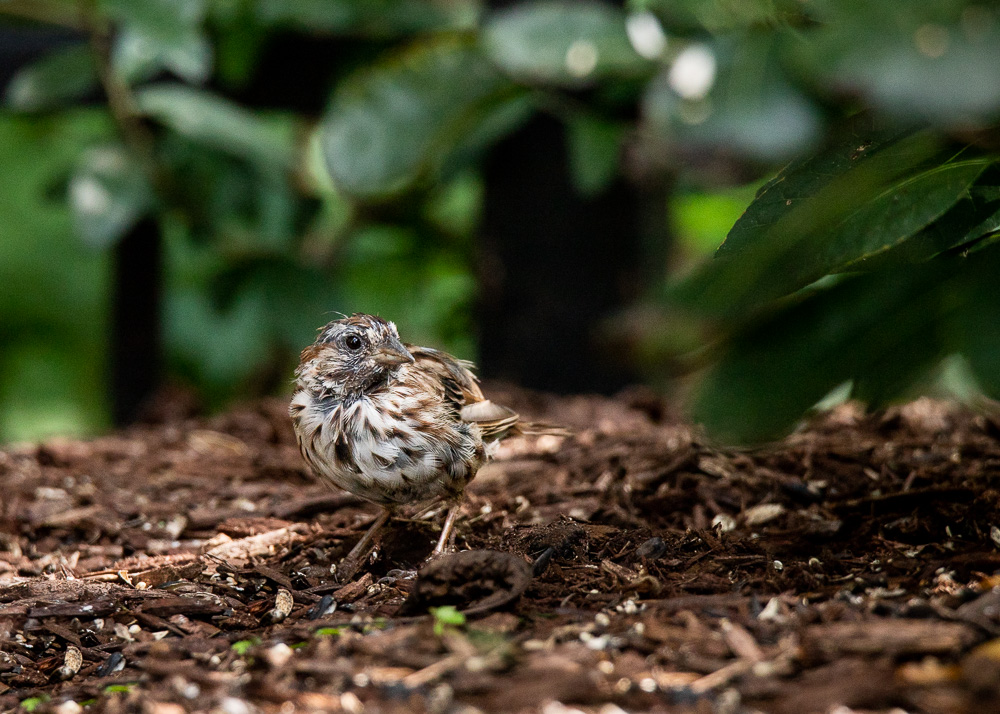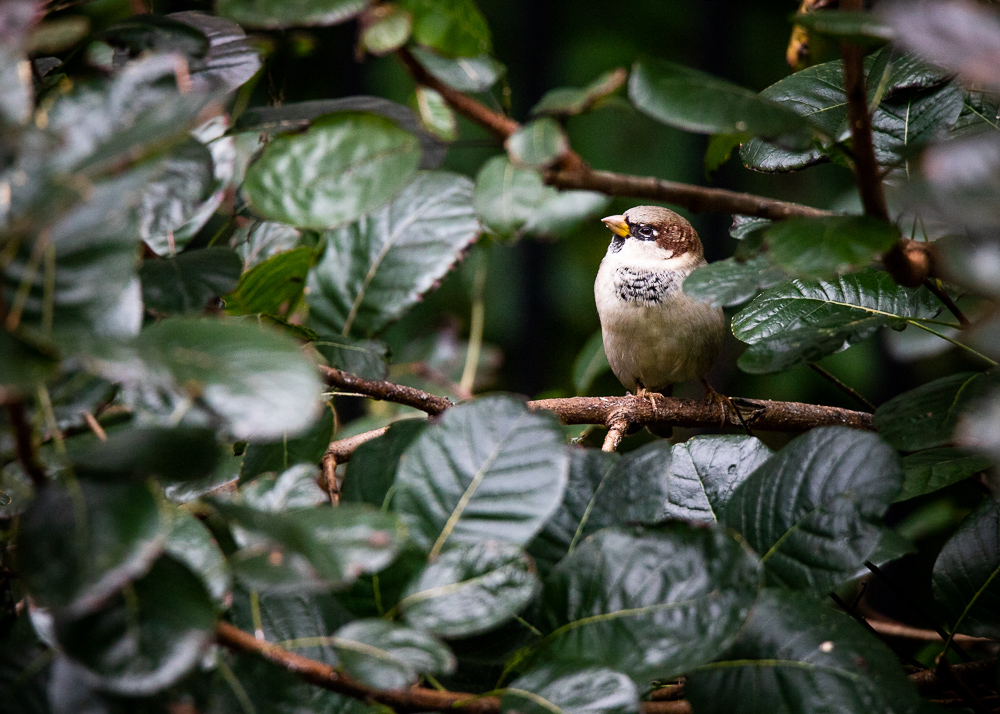When I started birdwatching (and knew basically nothing except to look for beaks and wings), one of the first species I managed to identify and photograph clearly was the sparrow. It wasn’t hard to find and differentiate at all! It let me get so close!

At the time I thought maybe this was a sign I was special, chosen as a safe and trustworthy human by sparrow-kind. But probably…I just happened to be there, with a camera. Sparrows are everywhere and incredibly habituated to humans. Some people’s “spark birds” may be rare or colorful or endowed with a particularly beautiful song; mine was the common, brown, scrappy sparrow.

Sparrows were brought to the New World (whimsically) as a familiar species from the Old Country and (more practically) as pest control for the larvae of the linden moth. I love the idea of an overwhelmed immigrant finding solace at the sight of an Old World sparrow on a sidewalk in 19th century New York…it’s romantic and comforting, and those are things we like our animal stories to be. Of course, that scene is tempered by the knowledge we have now, that that sparrow introduction was the beginning of an invasion that has had ecological repercussions in the years since. Once here, sparrows thrived too well and too quickly; they multiplied, ate butterflies, destroyed flowers, and crowded out native birds. They became a bit of a well-intentioned disaster.
So is it right to love them?
The thing about sparrows is that the same attributes that make them pests- their adaptability, their relentlessness, their number and frequency- also make them irresistible. You can find a sparrow almost anywhere, anytime…and observing them, you can’t help but be moved by their chirpy spirit.
The sparrows in our garden frequently try to eat seeds that are too big for them; they dart in and out of our vegetable garden boxes; they sit outside my husband’s home office window and stare at him while he works (causing him to dub them his “minions”); they stare at my dogs; they get stuck upside down in our suet feeder; sometimes they get stunned or soaked by rain; they sun themselves on branches or rocks after taking awkward dust baths; they fly into our Cleveland pear tree at dusk and chatter in such a crescendo we can hear it from inside the house. They have become familiar and funny; they’re our small, eccentric, feathered neighbors.

Sparrows aren’t impressive, but they’re good enough birds to get started birdwatching with; you can find them wherever you are, any and every day, and that’s something I not only appreciate, but love about them.
Also, occasionally, a moment with them still takes my breath away.

If for no other reason than we brought them here, we should love them. It’s not as if they had dreams of world conquest. They’re just doing their thing. I know they’re destructive to habitat, but so are we. I love them, too. And I like to think that they get solace from humans sometimes, the way we got once solace from them.
LikeLiked by 1 person
Letting the birds thrive and protecting there nature is the way to go. We all need to be environmentally conscious to give the birds a home. from gorillatrekkingsafariinuganda.wordpress.com
LikeLike
What a beautifully written tribute to sparrows! They were introduced to South Africa too – although I feel sure many birds hop rides on ships and end up being inadvertent settlers. The Common (formerly known as Indian) Mynah falls into that category here. I have enjoyed your writing as well as your attractive photographs.
LikeLike